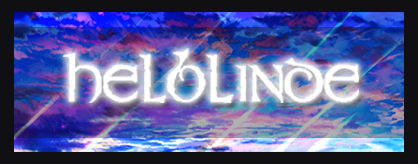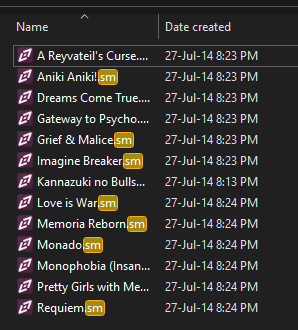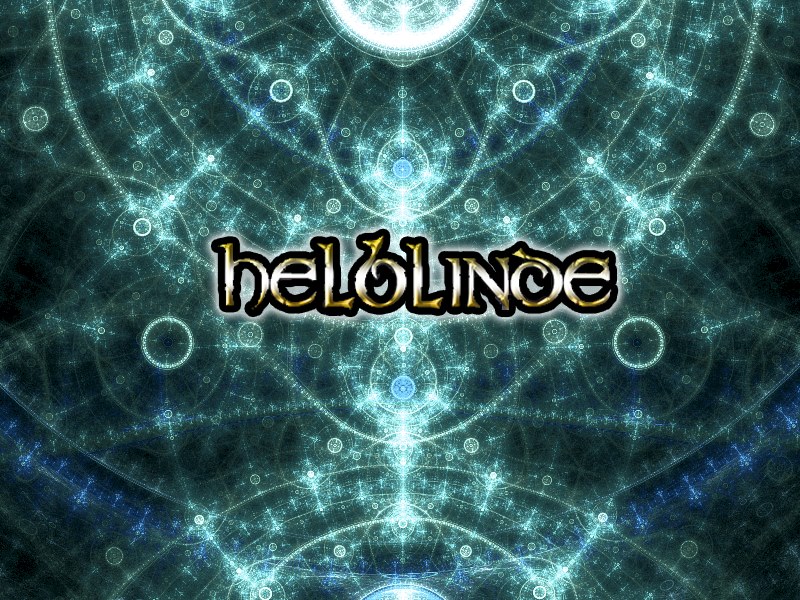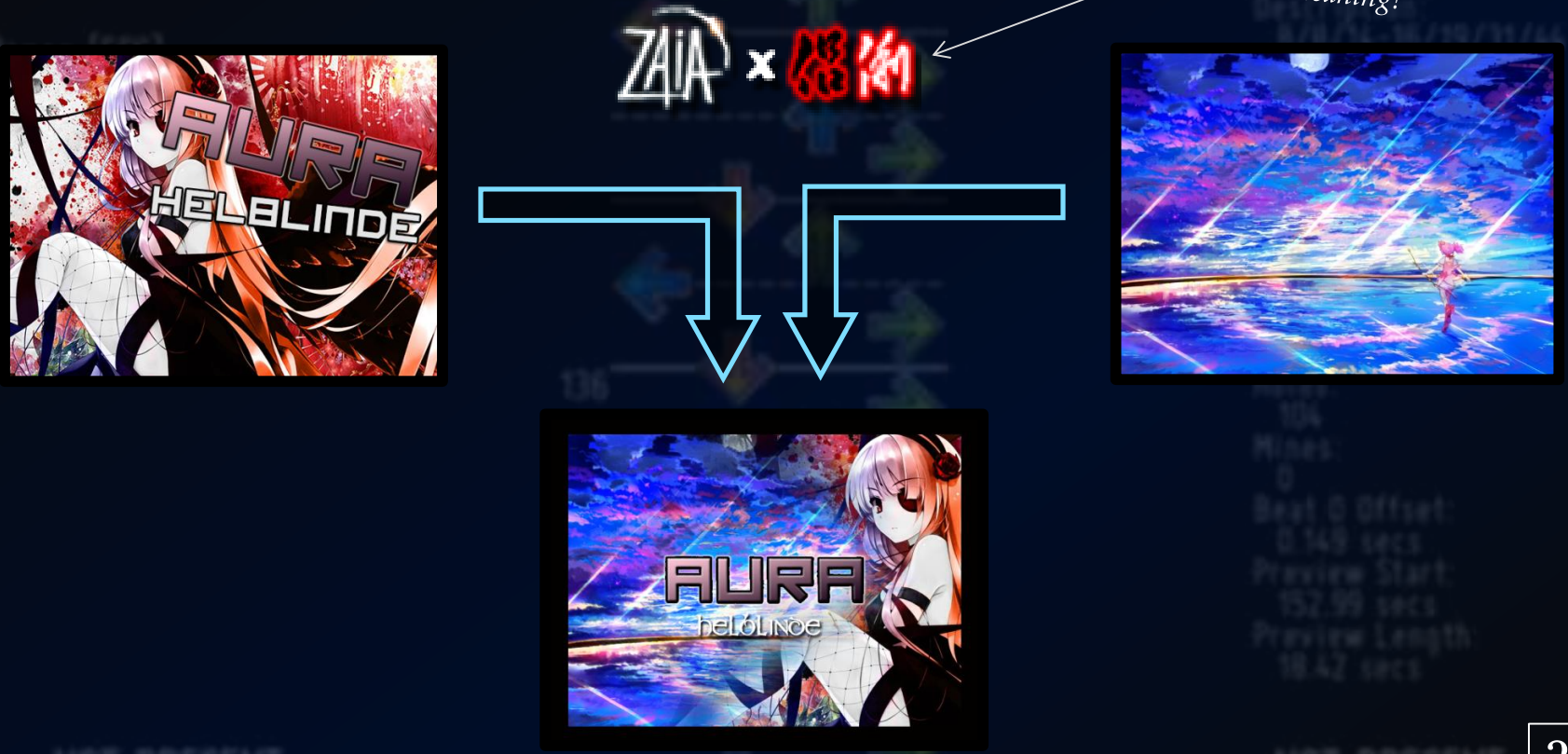
Helblinde is a stream pack by Zaia.
This was my first artist-specific pack since Powerglove in 2010. This pack came with a companion book that can be downloaded here. It contains extensive notes on each simfile as well as insight into
the production process.
This pack was followed by two sequels: Helblinde 2016 (2016) and Helblinde PDTA (2019)
His name is pronounced Hel-blin-deh, not Hell-blind.
| Pack Director | Zaia |
| Stepartists | Zaia, lolipo (as Loli) |
| BPM | 175-210 |
| Songcount | 21 |
| Blocks | 9-17 (10-17 target) |
| Type | Stream |
| Format | Singles |
| Release Date | Dec 01, 2014 |
¶ Structure
Simfiles are structured around 200bpm songs of about 4 minutes in length. All simfiles but one have four difficulties. Most expert level charts are in the 15-17 range.
Helblinde spread the concept of the “cut stream lower”, which is a stepping philosophy that favors lower difficulty charts that focus difficulty around the volume of 16th stream and the breaks between them, instead of using lowers to generate different rhythmic interpretations of the song. Simfiles effectively become one single chart, whereby the lowers serve as building blocks to progress through on the path towards the Expert chart, which is considered the “true” chart to the song. This process is advantageous for mass-produced stream content and reduces workload for the stepartist.
The chart description fields contain the stream breakdowns. Charts with no marked streams had the stepartist name in the description field instead.
¶ Development

Even as far back as 2013, when I re-discovered him whilst looking for music for Cirque du Lykan, Helblinde had been working on an album of full-length songs called Life Starts at 200bpm and that the short versions I'd been stepping were only previews. Therefore, this meant that a Cirque du Lykan spin-off pack of only Helblinde songs was virtually inevitable. It was only a matter of waiting for the album to release.
I found out it had finally dropped, on July 23, 2014, through a message from Drazu about the full version of Love Is War, and in deep anticipation of this, cleared out my schedule and began stepping immediately (I was actually at B1uEM4oM4o's house the night before doing pull-ups). The first thing I did was set up a stepping order, to help micromanage my own motivation. This was a new thing I was experimenting with and has become something I continue to do today. I purposely stepped the “worst” songs first, then built towards the best ones to counterbalance my stepping fatigue. I learned this by stepping Destination Talos - the good part of the song is near the end, so it gave me extra motivation to push through the earlier parts.
An explicit stepping order can be found on page 14 of the Companion Book. From this specific album, The Betrayer and Above The Clouds were the only songs I had no intention of stepping.
Two simfiles were were removed during production: Monophobia (Insanity Verse) and Dreamer's Solitude. Both were placed into my archive. The original scope of the pack was only to be the Life Starts at 200bpm songs, with Medium, Hard and Expert difficulties only (just like Lykan and Zeppelin).
Three days later, all the charts were stepped, and two days after that I would be boarding a plane to the USA.
After I returned to Australia early in September and after yet another sidequest, I increased the pack's size 1.5x and added Easy charts after noting significant difficulty jumps between Medium and Hard.
Once Rebuild of Sharpnel (v1) was stepped, and Zeppelin was released, the second round of Helblinde took place. Around 10 non-album songs were added, including fresh charts to Disconnected and Orbital Strike (despite both being less than a year old), and changing the bpm of Monado, which I'd sped up from 175 to 200, then was told by @@ it sounded bad, and slowed down to 190.
The Stream Breakdown Notation System receives its third symbol: *. It means the same as its modern incarnation, but the use case was rare and limited only to descriptions that were disproportionately long. At this time, only the lengths of streams were added into the truncated figure, and breaks were excluded. Helblinde 2016 is when I would change this behavior to include the breaks. Some charts also truncated out the - symbols where streams of equal length occurred back to back. Example: 4-4-4-4 would be shortened to 4444. Some liberties are taken with broken streams that are close together - some are consolidated into a single stream without the * qualifier attached to it.
¶ Artistic Influences and Chart Design
The writing style takes after Cirque du Lykan, for the most part, but with updated design principles. This is the pack in which I explored how to use candles to modulate difficulty and to create and release tension. More extensive details on this for each song can be found in the Companion Book.
Through stepping for Rebuild of Sharpnel (v1), I discovered 16th-shifting and intra-stream axis-swapping, which completely changed the game for stream simfiles for me. Armed with this powerful new ability, I immediately applied my knowledge and stepped the new Helblinde songs in a short period of time. Judging from the book, I already had gained an awareness of directional change and how certain pattern transitions had different tactile feels from other pattern transitions. One of the core building blocks of my style, relativistic pattern scaling, can be found here in an unrefined form in combination with technical elements like motif repetition, pitch relevance, and dimensional projection. A good point of comparison are the two Orbital Strike charts - stepped only a year apart but major changes happened during that year.
The more I learned, the more I was able to learn. One particular chart in this pack introduced yet another new concept to think about: the Tension Wind-Up. The simfile that introduced this was Heaven's Fall. In the Companion Book, I write no notes about this chart, and only referred to it as “my best simfile”. What I meant by that was that it explored a concept I'd never considered before using a technique I'd never used in this specific manner. The concept was engineering a chart's “mood” through patterning; in this case, using a tension wind-up. This technique uses patterns to intentionally build up physical tension within the player by either repeating a single pattern multiple times, or placing them in a specific position and keeping them there. This “winds” tension and is intended to produce an emotional response. Thus, through the tension wind-up, it could be demonstrated that stream charts could be designed to have “moods” and “personalities” by way of the emotional effects the chart's specific writing can evoke. The very specific section in question is M120-136.
¶ Graphics

The first background art I made was very early during production. I had always intended to use the Life Starts at 200bpm album cover text, so just needed a good background that complemented it. Inspired by Cranked Pastry's background art, I played around with similar ideas, but found the result a little lacking in character (abstract arts work for the abstract nature of dark psytrance).
The Madoka image was found later, and with this concept I particularly liked how calm and picturesque this image made me feel. It evokes a similar impression to that of Bliss, and I think this helps to act as a foil for the fast-paced, high energy cadence of Helblinde's music by drawing attention to the calmer, more subdued songs from which he samples that provide the underlying soul to his songs. Grief & Malice was considered the most popular of the Lykan Helblinde series, so it was a fitting tribute to feature a Madoka-based artwork for the full pack.
Minor editing was applied to the image; once again, PhotoShop Brush Stroke filters are used- this time, the goal was to achieve a painted looked, so the source image was smudged a little to soften the edges and give it more of an Impressionist quality.
This was the second background art of mine to feature the frame - Rebuild of Sharpnel's background art was the first to implement it.
Other unused background art images can be found in the Companion Book.
Aura's graphics are a combination of lolipo's single chart art and my fallback.
The Zaia 2014-2019 cdtitle is included. Aura has a custom cdtitle with one I made for Loli (lolipo).

¶ Songlist
Helblinde contains 21 songs.
| Song | Artist | BPM | Notes |
|---|---|---|---|
| A Reyvateil's Curse | Helblinde | 200 | Audio has a glitch at 0:06 that causes the chart to visually skip Audio won't load after the glitch in ArrowVortex |
| Aniki Aniki! | Helblinde & Shoujo | 200 | |
| Aura | Helblinde | 210 | Collab with lolipo |
| Disconnected | Helblinde | 200 | |
| Dreams Come True | Helblinde & 3R2 | 200 | |
| Gateway to Psycho | Helblinde | 200 | |
| Grief & Malice | Helblinde | 200 | |
| Heaven's Fall | Helblinde | 200 | |
| Imagine Breaker | Helblinde | 200 | |
| Kannazuki no Bullshit | Helblinde & TANUKI | 200 | |
| Lifeworld | Helblinde | 205 | |
| Little Busters Forever | Helblinde | 200 | |
| Locus (Helblinde remix) | M-Project | 180 | |
| Love is War | Helblinde ft. Hatsune Miku | 200 | |
| Memoria Reborn | Helblinde ft. Hatsune Miku | 200 | Audio has a glitch at 3:26 that causes the chart to visually skip Audio won't load after the glitch in ArrowVortex |
| Mirage of Deceit | Helblinde | 200 | |
| Monado | Helblinde | 190 | Song sped up from 175bpm |
| Orbital Strike | Helblinde | 180 | |
| Pretty Girls With Mental Disorders | Helblinde | 200 | |
| Requiem | Helblinde | 210 | |
| Song of Freyja | Helblinde | 175 |
¶ Reception and Retrospect
Helblinde was even more successful and popular than Lykan and Zeppelin. Critically acclaimed and enormously successful, Helblinde demonstrated high technical production quality across the board with a tight songlist, filled-out chart roster and focused bpm and difficulty range.
What gave it the distinct advantage was the usage of anime and video game samples and low level difficulties that allowed the pack to have a magnified casual reach, and subsequently it could be found on many machines that otherwise didn't thave any Cirque packs.
Opinion is divided on the usage of the cut-stream-lower type chart. Proponents argue that it streamlines charts and funnels players towards the Expert chart of the song, which is where most players aim for, and critics argue it represents a lazy stepping style and limits creative expression potential by reducing the lower charts to functions of the Expert chart.
Helblinde was a very high-profile project to have on my simfile CV and it definitely represented the climax of all the projects I had done up until that point. In tandem with Rebuild of Sharpnel v1, these two projects together opened the doors to new plateaus of creativity and raised my personal understanding of how densely a stream chart could be packed with engineered information. None of my projects after it were ever the same, and these same principles pioneered in these two packs are still being using today in more matured, refined forms. I think I leaned too hard on candles and hard transitions in this pack, and it resulted in some of the charts feeling “stiff”. Being overly zealous with candle use in this way led to instances of “pattern-deaf” layering (where subtleties in music are erased by patterns that are too similar in scale and lack nuance) and compromised the final chart's playability in unintended ways. I attribute this directly to a lack of experience working with patterns, and it would take many years and many charts of practice to find and understand the spectrum of transitions properly.
¶ Trivia
- Only "first edition" versions of the pack included the Companion Book pdf
- It was only available for the first week following release
- The kanji in Loli's cdtitle are 侣 and 悧, which read as “Ro” and “Ri”, and translate to “companion” and “clever”.
- Aura: Aside from the cuts in the intro for pacing, two measures were removed from the music (1:29-1:31 in the full version of the song). I used lolipo's skeleton so I have no knowledge about how this particular cut originated.
- Grief & Malice: Measures 154-170 were restepped between the v1.0 version and the release version
- Heaven's Fall: The description field shows the stream breakdown as
11-3/14/17/8/4-16/12when it should show11-3/14/17/8/4-16/12/8/7-8-12 - Monophobia (Insanity Verse) would make a return in 2019 in Helblinde PDTA as the final song of Allkore Riot Kontrol 07, and as a reference to its brief time in this pack, I used the chart almost entirely unaltered.
- Dreamer's Solitude would also return in Helblinde PDTA with a new chart
- A 225 bpm version of Orbital Stike, titled Orbital Strike ~prepare for liftoff edition~ was included in Aoreo's (JNero's) pack Jimmy Jawns 2
- Pretty Girls With Mental Disorders: m62.5-109.5 were restepped during the second round of stepping for the pack
- The Medium chart displays an 8-measure stream in the breakdown information, but there is no 8-measure stream. I think there was meant to be one
- The Quick Readme.xls displays Monado's bpm as 200 (from the v1.0 version), instead of the 190 that it should display
- It is also the first time this format type is used, where multiple spreadsheets display different types of information
- The percentage density sheet is introduced in this pack
- In the Companion Book, for Little Busters Forever, M156-157 is mentioned as being notable, but it is actually meant to be referencing M155-156
- Interestingly, the musical cue for the notable pattern is at M156-157, meaning the pattern is itself off by a measure
- If you are reading the Companion Book, the pattern I refer to as a “scale” is now called a “sweep"
- This is the first pack in which I begin using my current filename structure:
- Music files are named “[artist] - [title].ogg”
- Chart files are named “[title].sm"